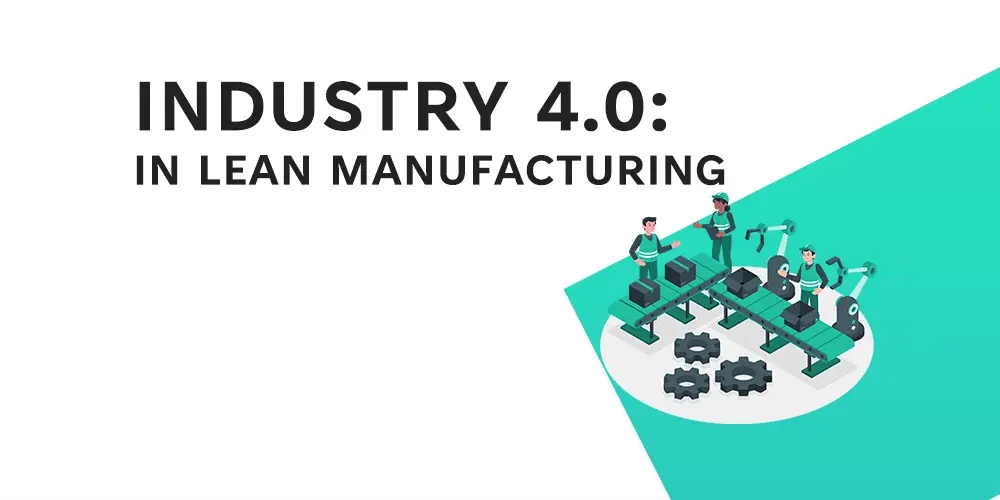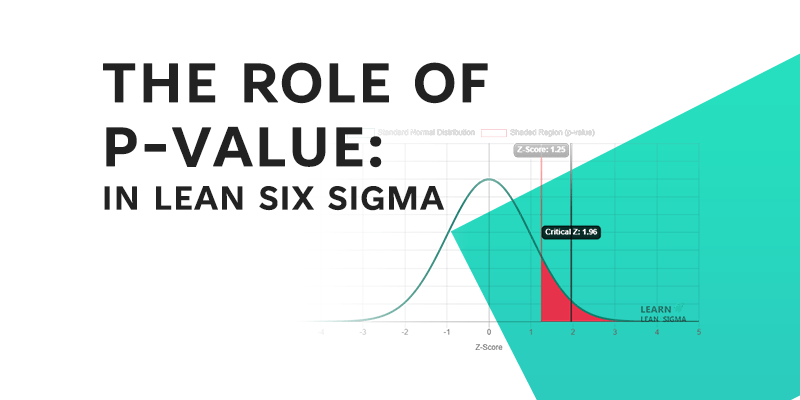For several decades, Lean Manufacturing has been a popular management approach aimed at eliminating waste and increasing efficiency. However, in the current era of Industry 4.0, incorporating technology into Lean Manufacturing can significantly increase its benefits. Industry 4.0 ushers in a slew of new technologies such as IoT, Big Data, AI, and Additive Manufacturing, all of which have the potential to significantly improve Lean Manufacturing practises.
In this blog post, we will look at how businesses can incorporate Industry 4.0 technologies into their Lean Manufacturing practises, as well as the advantages and disadvantages of doing so. We will also talk about how to overcome these obstacles and put the best practises in place to achieve the best results in Lean Manufacturing.
If you want to learn about the basics of Lean Manufacturing check out our blog post: Getting Lean and Mean: A Beginner’s Guide to Lean Manufacturing
Key Technologies of Industry 4.0 that can Support Lean Manufacturing
Internet of Things (IoT)
The Internet of Things (IoT) is the interconnection of devices and sensors via the internet that enables them to communicate and share data. The use of IoT in Lean Manufacturing can assist organisations in real-time data collection and analysis, facilitating decision-making and identifying areas for improvement. IoT devices, for example, can provide information on production line performance, material usage, and equipment maintenance requirements.
What is IoT
IoT devices can be used to optimise production and reduce waste in a variety of manufacturing processes. The devices can collect and analyse data from a variety of sources, such as sensors on machines, wearable devices worn by employees, and environmental sensors. The data can then be analysed to spot patterns, forecast maintenance requirements, and improve production line performance. IoT technology can also be used to track products throughout the supply chain, allowing manufacturers to monitor product quality and identify potential problems before they reach the end user.
Examples of IoT application in Lean Manufacturing
- Predictive maintenance – Internet of Things (IoT) devices can be used to monitor equipment in real time, detecting any anomalies or deviations from normal operation. This data can be analysed to forecast potential maintenance requirements, allowing manufacturers to take preventative measures to avoid machine breakdowns and reduce downtime.
- Quality control – IoT devices can be used in real-time to monitor product quality and detect any defects or errors. This allows manufacturers to identify problems early on and correct them before the product reaches the customer.
- Inventory management – IoT devices can be used to track inventory levels and reorder materials automatically when they run low. This ensures that manufacturers have the materials they need to keep production running without downtime or delays.
- Energy management – Internet of Things devices can be used to monitor energy consumption and identify areas where energy is being wasted. This can assist manufacturers in reducing their energy consumption and saving money on utility bills.
IoT is a key Industry 4.0 technology that can significantly improve Lean Manufacturing practises. Manufacturers can make informed decisions, optimise production, and reduce waste by leveraging real-time data collected by IoT devices. With the growing use of IoT devices in manufacturing, it is becoming increasingly important for manufacturers to integrate IoT technology into their Lean Manufacturing practises.
Big Data and Analytics
The vast amount of data generated by various sources, such as machines, sensors, and people, is referred to as big data. Analytics is the process of analysing data in order to gain insights and make sound decisions. Big data and analytics can be used in Lean Manufacturing to optimise production, reduce waste, and improve product quality.
What is Big Data and Analytics
Big data and analytics can be used to monitor and improve manufacturing processes. This information can be gathered from a variety of sources, including machine sensors and environmental sensors. The data can then be analysed using advanced analytics tools to identify patterns and make predictions about future performance. Manufacturers can then make informed decisions and take corrective action before problems arise.
Examples of Big Data and Analysics
- Predictive maintenance – Big data and analytics can be used to monitor equipment performance and predict potential maintenance needs. This enables manufacturers to take preventative measures to avoid machine breakdowns and minimise downtime.
- Quality control – Big data and analytics can be used to monitor product quality in real time and detect any defects or errors. This allows manufacturers to identify problems early on and correct them before the product reaches the customer.
- Supply chain optimization – Big data and analytics can be used to optimise the supply chain, ensuring on-time delivery of materials and meeting production schedules. This assists manufacturers in shortening lead times and increasing overall efficiency.
- Production process optimization – Big data and analytics can be used to identify bottlenecks and inefficiencies in production processes. This enables manufacturers to increase productivity while decreasing waste.
Artificial Intelligence (AI) and Machine Learning (ML)
Machine Learning (ML) and Artificial Intelligence (AI) are technologies that allow machines to learn and make decisions without being explicitly programmed. AI and ML can be used in Lean Manufacturing to optimise production, improve product quality, and reduce waste.
What is AI and ML?
AI and ML can be used to analyse large datasets, identify patterns, and make predictions about future performance. Manufacturers can then make informed decisions and take corrective action before problems arise. AI and machine learning can also be used to automate repetitive tasks, reducing employee workload and improving overall efficiency.
Examples of AI and ML used in Lean Manufacturing
- Predictive Maintenance: AI and machine learning are used to forecast when machines will fail, allowing maintenance teams to repair or replace them before they cause downtime. Machine learning algorithms can identify patterns that indicate when a machine is likely to fail by analysing data from sensors and other sources.
- Supply Chain Optimization: AI and ML are used to optimise the supply chain by analysing data on suppliers, inventory, and demand. Manufacturers can optimise inventory levels and reduce lead times by using machine learning algorithms to identify patterns and trends in data.
- Production Optimization: AI and ML are used to optimise production processes by analysing data on production rates, downtime, and other factors. Machine learning algorithms can identify opportunities for increased efficiency, such as adjusting machine settings or rescheduling production runs.
- Quality Control: AI and ML are used to improve product quality by analysing data from on-line sensors and cameras. Machine learning algorithms can detect defects and anomalies in real time, allowing quality control teams to identify and resolve issues before they have an impact on the final product.
- Autonomous Vehicles: AI and ML are used to develop autonomous vehicles such as self-driving forklifts and other factory equipment. These vehicles use sensors and machine learning algorithms to avoid obstacles and complete tasks without the assistance of humans.
Additive Manufacturing (3D Printing)
What is Additive Manufacturing (3D Printing)
Additive Manufacturing, also known as 3D Printing, is the process of creating three-dimensional objects by layering material until the final product is formed. In contrast, traditional subtractive manufacturing involves removing material from a larger piece until the desired shape is achieved.

There are several advantages to using additive manufacturing over traditional manufacturing methods. It enables the creation of complex geometries and customised designs, reduces material waste, and can be used to create parts on demand, removing the need for large inventories.
Examples of Additive Manufacturing (3D Printing)
Additive Manufacturing is used in a variety of ways in Lean Manufacturing, including:
Rapid Prototyping – Additive Manufacturing can be used to create prototypes of new products quickly, allowing manufacturers to test and refine designs before committing to large-scale production.
Tooling – Additive Manufacturing can be used to create custom tooling for manufacturing processes, thereby reducing lead times and increasing efficiency.
Spare Parts – Additive Manufacturing can be used to create spare parts on demand, eliminating the need for large inventories and long lead times.
Jigs and Fixtures – Additive Manufacturing can be used to create custom jigs and fixtures for manufacturing processes, which improves accuracy and reduces waste.
Assembly Aids – Additive Manufacturing can be used to create assembly aids like custom tool holders and alignment guides, which increases efficiency and reduces errors
Benefits of Incorporating Industry 4.0 Technologies in Lean Manufacturing
Increased efficiency
Incorporating Industry 4.0 technologies such as IoT, Big Data analytics, AI, and Additive Manufacturing can significantly improve manufacturing process efficiency. These technologies have the potential to automate tasks, reduce the need for manual labour, and optimise production processes, resulting in shorter production times and higher productivity.

Reduced Downtime
Downtime in manufacturing processes can also be reduced using Industry 4.0 technologies. AI and IoT-enabled predictive maintenance can detect when machines are likely to fail, allowing maintenance teams to fix them before they cause downtime. Furthermore, using sensors and machine learning algorithms, real-time quality control can detect defects and anomalies before they cause production delays.
Enhanced Quality Control
Industry 4.0 technologies have the potential to significantly improve quality control in manufacturing processes. Data from sensors and cameras on the production line can be analysed in real-time by real-time data analytics and machine learning algorithms, allowing manufacturers to detect defects and anomalies in real-time. This can lead to higher product quality, less waste, and higher customer satisfaction.
Greater Flexibility and Customisation
Industry 4.0 technologies, such as Additive Manufacturing, can significantly increase manufacturing process flexibility and customization. On-demand customization of products and parts eliminates the need for large inventories and shortens lead times. Furthermore, machine learning algorithms can optimise production processes to meet changing demand, allowing manufacturers to respond quickly to market changes.
Improved Safety and Sustainablity
Industry 4.0 technologies can also improve manufacturing process safety and sustainability. Autonomous vehicles and robotics, powered by AI and machine learning, can perform dangerous tasks while lowering the risk of worker injury. Furthermore, additive manufacturing can help reduce material waste, and predictive maintenance can help prevent breakdowns and lower the environmental impact of manufacturing processes.
How to Integrate Industry 4.0 Technologies in Lean Manufacturing
Develop a Technology Roadmap
Creating a technology roadmap is the first step in integrating Industry 4.0 technologies into Lean Manufacturing. This roadmap should outline the specific technologies to be implemented, the anticipated benefits, and the implementation timeline. It should also identify potential risks and challenges, as well as mitigation strategies. The technology roadmap should be in line with the overall business strategy of the company and should include input from all relevant stakeholders.
Identify the Right Technology Partners
It is critical to identify the right technology partners in order to successfully implement Industry 4.0 technologies. These partners should have a track record of successfully implementing similar technologies in the manufacturing industry, as well as the technical expertise and resources required to support the implementation process. To ensure a successful partnership, clear communication channels and a shared vision for the implementation process must be established.
Invest in Employee Training
Industry 4.0 technologies necessitate the acquisition of new skills and expertise, and it is critical to invest in employee training to ensure their successful implementation. This training should cover both technical skills like data analysis and machine learning as well as soft skills like communication and teamwork. Employees must be involved in the implementation process from the start to ensure buy-in and to foster a culture of continuous learning.
Create a Culture of Continuous Improvement
Integrating Industry 4.0 technologies into Lean Manufacturing is a never-ending journey of continuous improvement. It is critical to foster a continuous improvement culture that encourages experimentation and risk-taking. Leadership should support this culture, which should include input from all relevant stakeholders, including employees, technology partners, and customers.
Monitor and Meausre Results
It is critical to monitor and measure results in order to ensure the successful integration of Industry 4.0 technologies in Lean Manufacturing. This entails gathering data on key performance indicators (KPIs) and analysing the results to determine the effectiveness of the technology implementation. Establishing a feedback loop that allows for continuous improvement and optimization of manufacturing processes is critical.
Overall, incorporating Industry 4.0 technologies into Lean Manufacturing necessitates a strategic approach that includes creating a technology roadmap, identifying the right technology partners, investing in employee training, fostering a culture of continuous improvement, and monitoring and measuring results. Manufacturers can successfully implement Industry 4.0 technologies by following these steps, resulting in increased efficiency, reduced downtime, improved quality control, greater flexibility and customization, and improved safety and sustainability.
Challenges of Incorporating Industry 4.0
A High cost of Investment
The high cost of investment is one of the most difficult aspects of incorporating Industry 4.0 technologies into Lean Manufacturing. These technologies necessitate a substantial initial investment in hardware, software, and employee training. This can be a significant barrier for small and medium-sized manufacturers who may lack the necessary resources. Manufacturers can overcome this challenge by exploring financing options such as leasing or partnering with technology providers to share the cost.
Resistance to Change
Resistance to change is another barrier to incorporating Industry 4.0 technologies into Lean Manufacturing. Employees may be resistant to new technologies and processes, especially if they believe their jobs are in jeopardy. To overcome this challenge, employees must be involved in the implementation process from the start and the benefits of new technologies and processes must be communicated. It is also critical to provide employees with training and support to assist them in adapting to the changes.
Data Privacy and Security Concerns
Industry 4.0 technologies rely on data and connectivity, which can raise concerns about data privacy and security. Manufacturers must ensure the security of their data and compliance with data privacy regulations. This necessitates the implementation of appropriate data security measures, such as encryption and access controls, as well as employee training on data privacy and security best practises.
Lack of Technical Expertise
Industry 4.0 technologies necessitate specialised technical knowledge, which can be difficult for manufacturers who lack the in-house expertise required to implement these technologies. This can lead to a reliance on expensive third-party technology providers. Manufacturers can overcome this challenge by investing in employee training and development to develop the necessary technical expertise in-house. They can also collaborate with technology providers to get the necessary expertise and support.
Conclusion
Finally, incorporating Industry 4.0 technologies into Lean Manufacturing can provide numerous benefits such as increased efficiency, reduced downtime, improved quality control, greater flexibility and customization, and improved safety and sustainability. IoT, Big Data and Analytics, AI and Machine Learning, and Additive Manufacturing are key Industry 4.0 technologies that can support Lean Manufacturing.
To incorporate these technologies into Lean Manufacturing, it is necessary to create a technology roadmap, identify the appropriate technology partners, invest in employee training, foster a culture of continuous improvement, and monitor and measure results. However, there are some drawbacks to incorporating Industry 4.0 technologies into Lean Manufacturing, such as high investment costs, resistance to change, data privacy and security concerns, and a lack of technical expertise.
Despite these challenges, manufacturers can successfully implement Industry 4.0 technologies by addressing them and embracing their benefits. Manufacturers can remain competitive and adapt to changing market demands by doing so.








